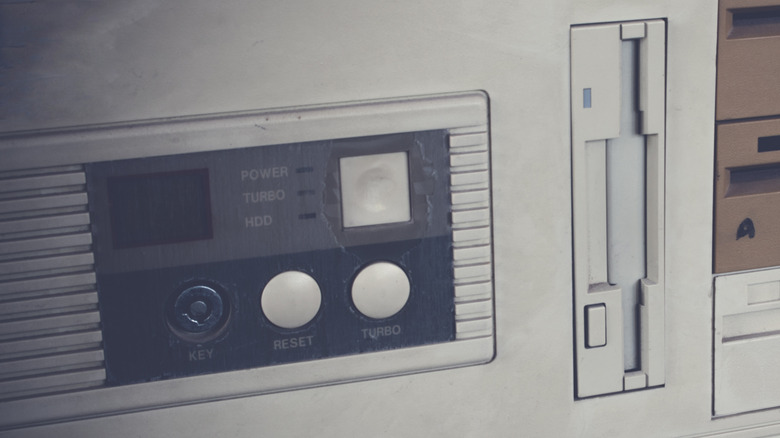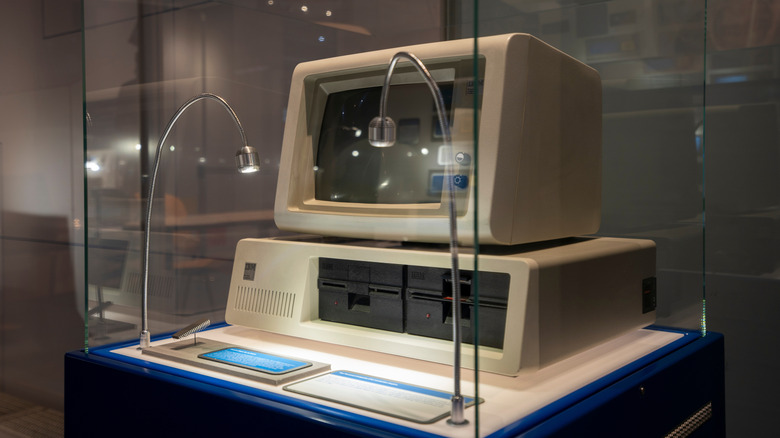What Was The Turbo Button On Old '90s PC For & Why Don't We Have It Anymore?
Back when computers were harder to come by, and regularly banished to the ubiquitous computer room if they were in the home at all, they had a few features that can seem a little tricky to place the usefulness of. This includes the turbo button: a toggle on the front of computer towers, often near the disc drive. To make something go turbo is to supercharge it, giving it more power. Usually, turbocharging is something you would do to an engine or turbine, making it a little unclear what exactly the button would do in the context of a PC.
The reality of exactly what the button did is even more confusing. In the case of the Eagle PC Turbo, which according to How-to-Geek is probably the first computer to include an explicit turbo button, the toggle would switch clock speeds between 8 and 4.77 Megahertz (MHz). This means that pressing the turbo button actually slowed down PC clock speeds, rather than overclocking the PC. The reason behind this is that higher clock speeds could make computers seem like they were running much slower, as they weren't compatible with a lot of pre-existing games and software.
When computers were operating at 8 MHz, it could cause programs to become unstable or crash, and games to operate at entirely the wrong speed, rendering them practically unplayable. Other home computers started following suit, tacking turbo buttons that would speed user experiences up by slowing operations down. Eventually, technology moved on from the 1980s and 1990s, leaving turbo buttons behind. Software started being designed in ways that would work in tandem with clock speed changes without requiring users to manually hit a switch.
The turbo button charts back to the IBM Personal Computer
Back in 1981, technology company International Business Machines Corporation (IBM) launched its Personal Computer, an open-architecture system designed predominantly for home use. It wasn't the first time consumers could buy a home PC, but it was IBM's first time selling their computers to non-business entities. The machine rang in at around $1,500 at the time, or roughly $5,300 when accounting for inflation, and offered a Central Processing Unit (CPU) that ran at 4.77 MHz. Because of this, software was generally written to work optimally at that clock speed.
Naturally, other computing companies followed by offering not only their own riffs on the Personal Computer, but also by trying to improve on what IBM had to offer. This included offering faster clock speeds, running right the way up to the previously mentioned 8 MHz. This caused software written for the IBM Personal Computer to frequently struggle on faster machines. Because of this, some devices started offering toggles to switch between higher and lower clock speeds, although they weren't labelled with turbo until Eagle Computers likely started the trend.
After the arrival of the Eagle PC Turbo, the turbo button became an omnipresent aspect of 1990s computing. Other machines also started adopting similar mechanisms, until technology advanced enough that they were no longer necessary or novel. So, if you come across an old desktop PC, look out for a turbo button, or its predecessor in the form of an accelerator card. But don't expect it to speed things up.

